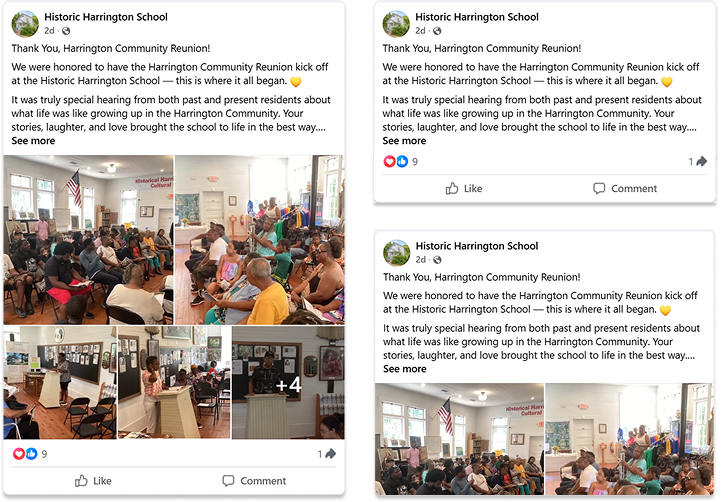St. Simons African American Heritage Coalition is a nonprofit organization with a mission to educate people about African American history here on Georgia’s largest barrier island; to preserve the remaining ancestral lands and homes; and to revitalize our Gullah Geechee heritage through tours, programs, and festivals throughout the seasons.
As St. Simons Island became increasingly popular to visitors and people seeking to live here in the mid-20th Century, three African American neighborhoods on the island were imperiled. Then and now, we experience development encroachment and the erasure of our quality of community for new subdivisions, and cemeteries ringed by golf courses and modern retreats.
SSAAHC is comprised of African American property owners and concerned citizens who care about preserving the heritage of the original African American communities on this island.
Since its formation in 2000 at the First African Baptist Church of St. Simons Island, the St. Simons African American Heritage Coalition rejoices in community gatherings and tours of our historic schoolhouse as a treasured community center and meeting place for Gullah Geechee celebrations.
Events Calendar
-
July
Civil Rights
Segregation, Voting Rights, NAACP, Black Wall Street
-
August
Preserving African
American HeritageBuildings, Family History, Cemeteries, Organizations, Success, Challenges
-
September
Education
Schools, Teachers, Lessons Taught at Home
-
July
Civil Rights
Segregation, Voting Rights, NAACP, Black Wall Street
-
August
Preserving African
American HeritageBuildings, Family History, Cemeteries, Organizations, Success, Challenges
-
September
Education
Schools, Teachers, Lessons Taught at Home
Upcoming Events at
St. Simons African American Heritage Coalition
St. Simons African American Heritage Coalition
11.366 people like this

Join us in our journey to revitalize
St. Simons Island’s African American heritage.


